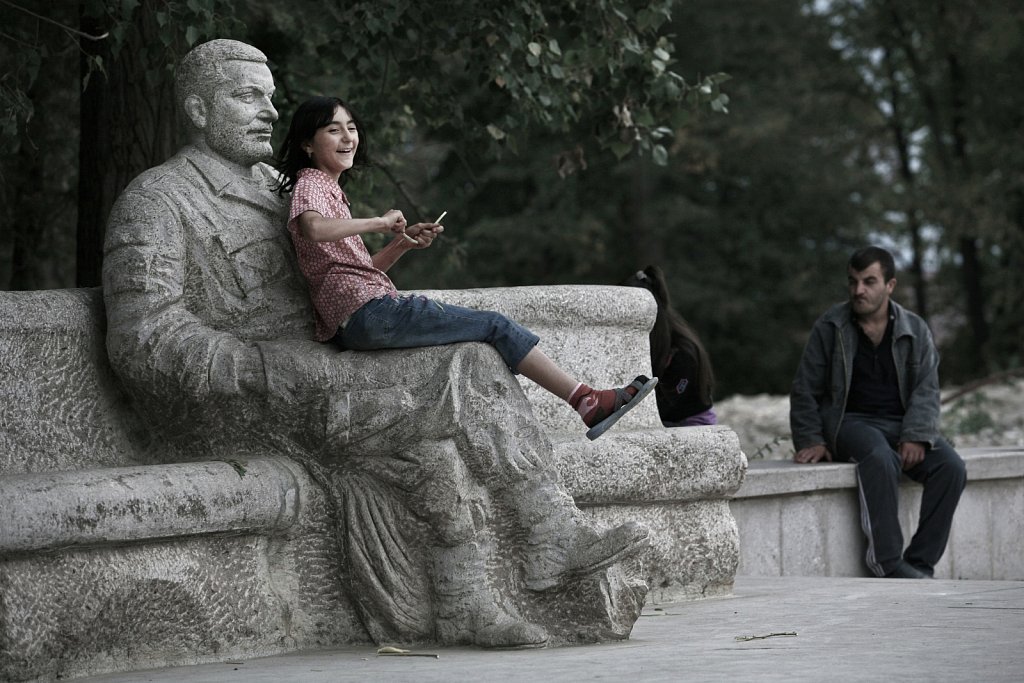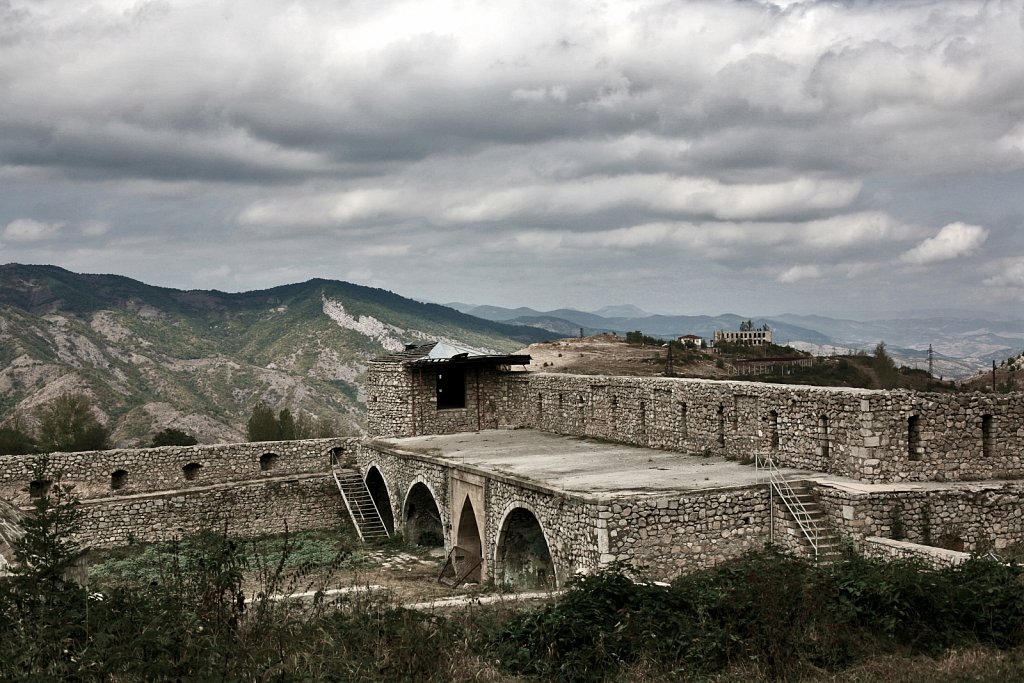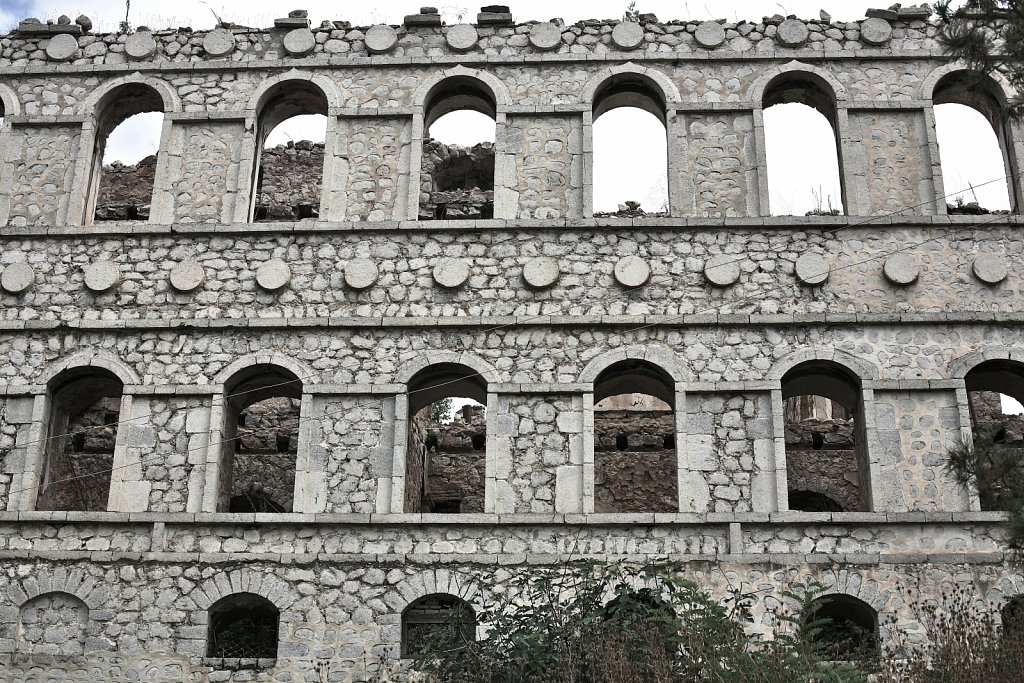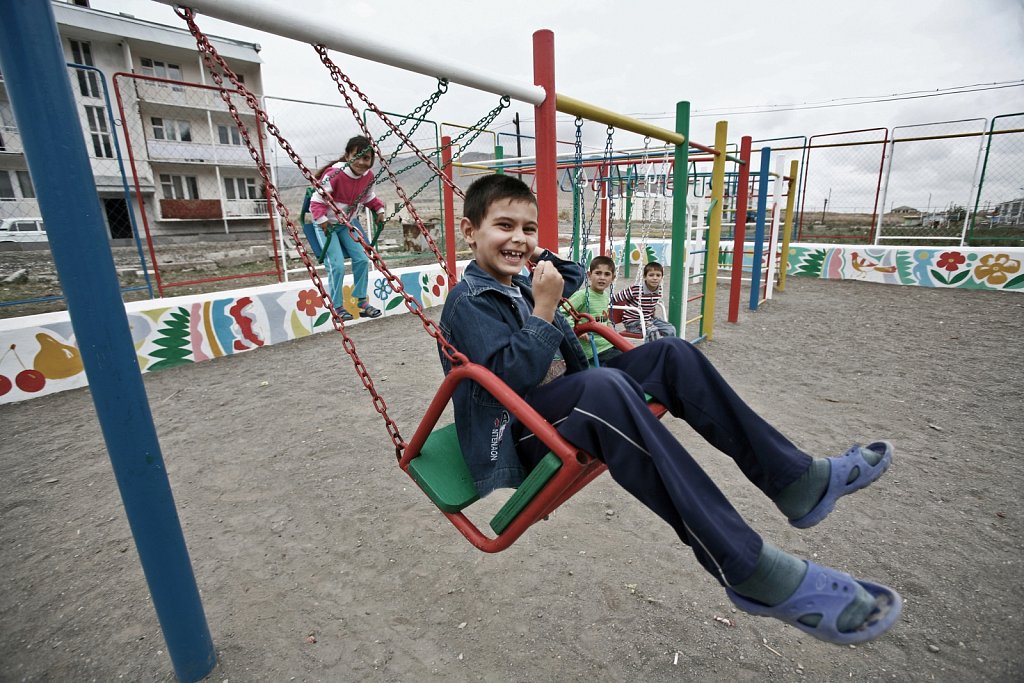
Nagorno-Karabakh
A girl plays on the statue depicting Vazgen Sarkissian in downtown Shushi. Vazgen Sarkissian is considered a national hero of Armenia and it was one of the founders of the Armenian Army, creating in 1992 the special battalion “Mahaparts”. He was the first Defense Minister and prime minister of the Armenian Republic between 11th of June 1999 and 27th of October 1999, when he was killed during the crimes in the Armenian Parliament. Shushi, Nagorno-Karabakh, 20 September 2008.
Nagorno-Karabakh
A partly restored Shia Mosque in the town of Shushi. Before the Nagorno-Karabakh War the city was the main cultural center of Karabakh, also known as “Paris of the Caucasus”. With more than three quarters of the buildings being destroyed during the war, the city has begun the reconstruction of historical buildings with a special architectural and historical value. Shushi, Nagorno-Karabakh, 20 September 2008.
Nagorno-Karabakh
A fragment of the Natavan Castle wall (XIXth century) in the city of Shushi. Natavan Castle was named after the Azerbaidjani poetess Khan Gizi Hurshid Banu Natavan (1830-1897). Before the Nagorno-Karabakh War the city was the main cultural center of Karabakh, also known as “Paris of the Caucasus”. With more than three quarters of the buildings being destroyed during the war, the city has begun the reconstruction of historical buildings with a special architectural and historical value. Shushi, Nagorno-Karabakh, 18 September 2008.
Nagorno-Karabakh
A wall of the Natavan Castle (XIXth century) in the city of Shushi. Natavan Castle was named after the Azerbaidjani poetess Khan Gizi Hurshid Banu Natavan (1830-1897). Before the Nagorno-Karabakh War the city was the main cultural center of Karabakh, also known as “Paris of the Caucasus”. With more than three quarters of the buildings being destroyed during the war, the city has begun the reconstruction of historical buildings with a special architectural and historical value. Shushi, Nagorno-Karabakh, 18 September 2008.
Nagorno-Karabakh
A restored Armenian T-72, knocked out of commission while attacking Azeri positions in Askeran during the Nagorno-Karabakh War, serves as a war memorial on the outskirts of Stepanakert, the capital of Nagorno-Karabakh, 18 September 2008.
Nagorno-Karabakh
A piece of wall remained intact on a field near Khojaly city, Nagorno-Karabakh. Khojaly is a military base, situated near the border with Azerbaijan and 10 km Northeast of the capital Stepanakert. The city is known for the Khojaly Massacre committed on 25–26 February 1992 by the Armenian and, partially, by CIS armed forces (the Russian 366th Motor Rifle Regiment) during the Nagorno-Karabakh War. There is no official report of mines left unexploded, but is certain that Nagorno-Karabakh is one of the former Soviet Union territories with the greatest area of minefields. Khojaly, Nagorno-Karabakh, 19 September 2008.
Nagorno-Karabakh
Children play in the swings at a recreational spot built by the Community Council in Khojaly city, Nagorno-Karabakh. The city is a military base, situated near the border with Azerbaijan, 10 km Northeast of the capital Stepanakert. The city is known for the Khojaly Massacre committed on 25–26 February 1992 by the Armenian and, partially, by CIS armed forces (the Russian 366th Motor Rifle Regiment) during the Nagorno-Karabakh War. Khojaly, Nagorno-Karabakh, 19 September 2008.
Nagorno-Karabakh
A boy throws to another a school bag in front of a balcony in Khojaly city, Nagorno-Karabakh. The city is a military base, situated near the border with Azerbaijan and 10 km Northeast of the capital Stepanakert. The city is known for the Khojaly Massacre committed on 25–26 February 1992 by the Armenian and, partially, by CIS armed forces (the Russian 366th Motor Rifle Regiment) during the Nagorno-Karabakh War. Khojaly, Nagorno-Karabakh, 19 September 2008.
Nagorno-Karabakh
A soldier walks on a street in Khojaly city, Nagorno-Karabakh. The city is a military base, situated near the border with Azerbaijan and 10 km Northeast of the capital Stepanakert. The city is known for the Khojaly Massacre committed on 25–26 February 1992 by the Armenian and, partially, by CIS armed forces (the Russian 366th Motor Rifle Regiment) during the Nagorno-Karabakh War. Khojaly, Nagorno-Karabakh, 19 September 2008.
Nagorno-Karabakh
Children play in front of an apartment block in Khojaly city, Nagorno-Karabakh. Khojaly is a military base situated near the border with Azerbaijan, 10 km Northeast of the capital Stepanakert. The city is known for the Khojaly Massacre committed on 25–26 February 1992 by the Armenian and, partially, by CIS armed forces (the Russian 366th Motor Rifle Regiment) during the Nagorno-Karabakh War. Khojaly, Nagorno-Karabakh, 19 September 2008.








